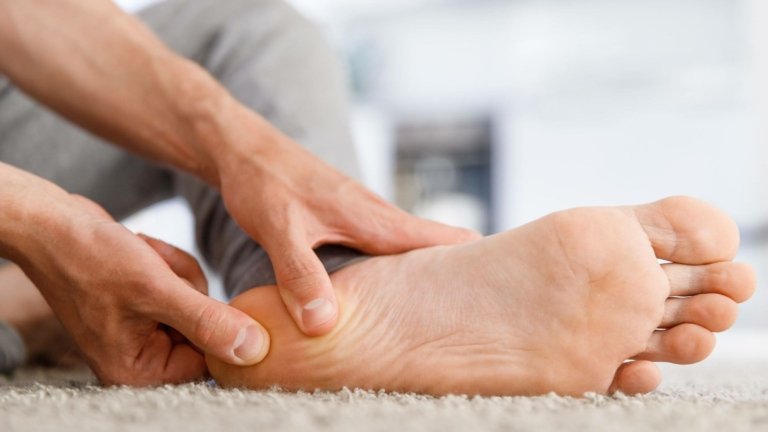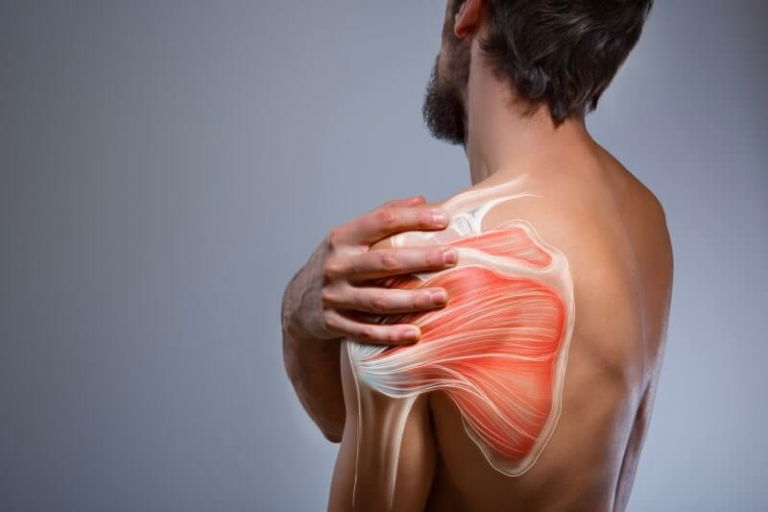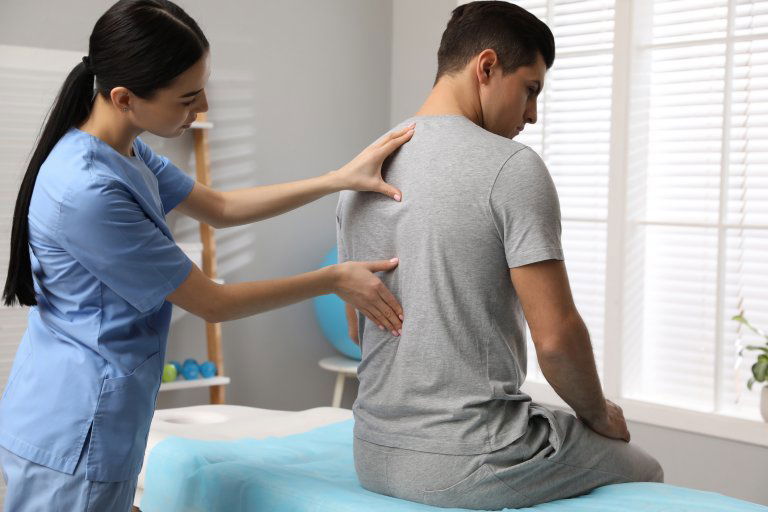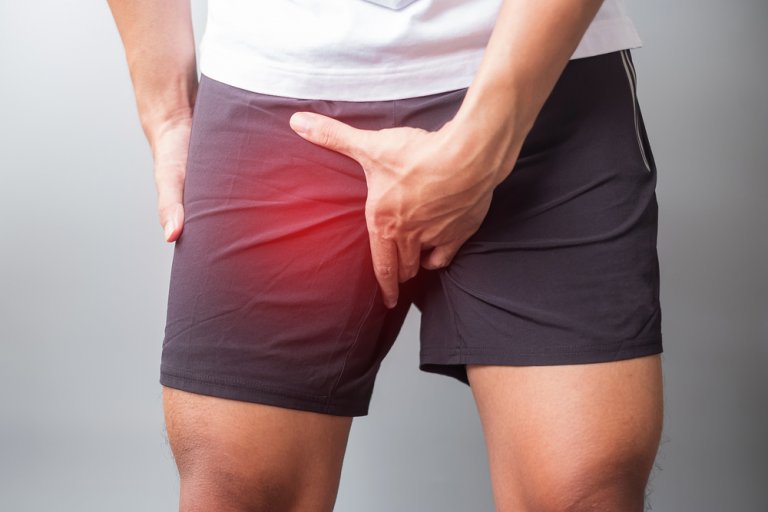To a large extent, the ankle and foot enable people to move efficiently. Adaptation of the foot to the shape of the ground for push-off from the ground enables balanced functioning of bones, joints, tendons and muscles. We are therefore talking about structures that are under constant strain. Unfortunately, the ankle is one of the most commonly injured joints in all people.
It is injured in athletes as well as in the general population, as everyday activities can quickly lead to improper movement leading to injury. Unfortunately, ankle injuries are often accompanied by inadequate treatment and rehabilitation, which can lead to recurrent and chronic problems. The key to an ankle injury is immediate action – assessing the severity of the injury as soon as possible and developing an individualized rehabilitation plan.
If you have ankle problems, we at Medicofit will treat you in a holistic and high-quality way. We will choose the best treatment for you and, in the case of surgery, provide you with excellent and individually tailored pre-operative preparation and rehabilitation. With the help of experienced specialists, we will make sure that you return to a better level of functioning than before the problem or injury started as soon as possible. The ankle and foot structure are the foundation of stability and lower limb movement
Ankle and foot are the main structures for the movement
The ankle and foot are structurally adapted units that transmit the recreational force of the ground upwards and form the basis of stability and movement of the lower limb during movement of the individual. (5). Most injuries are caused by the action of large forces over a short period of time. Injuries to ankle structures are caused by incorrect positioning of the foot at the time of application of the force, or by the application of indirect, rotational or translational forces. (3).

Depending on the type of injury or problem, we decide on the treatment that is most appropriate for the individual. Some conditions can be successfully treated non-operatively with the help of physiotherapists and kinesiologists – through a carefully designed rehabilitation program, a wide range of exercises and therapies. This is not always possible, so in some cases surgery is needed to resolve the problem (8).
What is ankle arthroscopy and what types of procedures are there?
Ankle arthroscopy is a minimally invasive surgical procedure used in orthopedy to diagnose and treat problems in the ankle. Ankle arthroscopy is performed using a small, thin, fibre-optic camera (called an arthroscope) that can magnify and transfer images of the ankle to a video screen (7).
Using an arthroscope and surgical tools, the surgeon examines the joint and makes an accurate diagnosis or treats the tissues inside or around the ankle. Ankle arthroscopy detects and corrects problems without major skin and tissue damage, which means less post-operative pain and a faster recovery and return to function than with open surgery. (6).
It is a procedure designed to improve your quality of life, reduce pain, and prevent limited mobility and difficulties with everyday activities. (2).
In which cases is ankle arthroscopy performed?
Ankle arthroscopy is used to diagnose and treat a variety of problems. We opt for diagnostic arthroscopic surgery when non-invasive diagnostic procedures have not identified the real cause of the ankle pain and swelling.

In such cases, ankle arthroscopy gives us insight and clarity into the problem, as well as treatment. In some cases, however, therapeutic arthroscopy is planned from the outset to address problems whose cause is already known. (7).
It is used to treat post-injury conditions (sprains, fractures, dislocations) and diseases (degenerative disorders, inflammatory diseases). The main reasons for ankle arthroscopy include chronic pain, swelling and limited joint mobility (2).
Conditions for which ankle arthroscopy is performed:
- Ankle pain – with ankle arthroscopy, a surgeon can find the cause of your problems.
- Torn ligaments and ankle instability – the many ligaments in the ankle keep it stable and allow movement, so they are particularly important. With ankle arthroscopy, the surgeon reconstructs the torn ligaments.
- Ankle compression – usually due to overuse, nerve compression occurs in the ankle and foot. Ankle arthroscopy allows the joint to move again and allows the neurological structures to move freely.
- Scar – can be the result of an injury. Ankle arthroscopy is used to remove scar tissue.
- Arthritis (osteochondral damage may also be present) – in the case of joint inflammation, ankle arthroscopy can be used to reduce pain and improve movement .
- Cartilage injuries – ankle arthroscopy is used to diagnose or treat cartilage and bone injuries or defects.
- Loose bodies – pieces of bone or cartilage in the ankle, which can be the result of injury or degenerative changes and can cause problems in the joint (locked joint). Ankle arthroscopy removes the loose bodies and allows smooth movement again (4, 6).

In addition to the indications listed above, ankle arthroscopy can also be used to:
- Remove bony growths and bones in the front or back of the ankle if they interfere with movement and cause pain.
- Removes the thickened joint capsule in chronic arthritis – for example rheumatoid arthritis.
- Remove joint growths and shrunken joint capsule after an ankle fracture or sprain.
- Remove benign tumors in the ankle area: on bone, cartilage or joint capsule.
- Performs fixation (arthrodesis) of the upper or lower temporomandibular joint, for severe cartilage defects.
- Removes inflamed tissue and prominent bony growths (Haglund’s exostosis) at the origin of the Achilles tendon (2).
- Identify the cause of unexplained ankle symptoms.
- Removes inflamed tissue in Synovitis – inflammation that can result from injury, overload or wear and tear (7).
How is ankle arthroscopy performed?
At Medicofit, we know that no procedure is just a precaution on the day of surgery, but requires special treatment before and after the procedure. Recognizing the importance of pre-operative preparation, treatment starts before the ankle arthroscopy itself.
Our physiotherapists and kinesiologists will teach you the correct exercises for flexibility and strengthening, and encourage you to move – avoiding, of course, activities that aggravate the problem.

It is important to follow your individualized plan and the instructions given to you, as adequate pre-operative preparation will facilitate and speed up your rehabilitation.
Ankle arthroscopy is performed under general or local anesthesia. Small incisions are made above the joint. One of these allows the optics of the endoscope to enter the joint and image the inside of the joint. The remaining incisions are used as access points for surgical instruments to access the joint structures to repair and heal the damaged tissue. First, the damaged tissue and free particles are removed, and then the planned procedure is carried out.
The benefits of having ankle arthroscopy are as follows:
- less scarring,
- faster healing with reduced risk of infection,
- shorter hospitalization time, and
- better outcomes for a wide range of procedures (1).
Of course, every surgical procedure carries a certain risk for the patient, so it is a good idea to be aware of the possible adverse effects of ankle arthroscopy before the procedure, such as: nerve and vascular damage, tingling sensations, swelling of the operated area, post-operative bacterial infection, stiffness in the operated joints, and complications related to general and spinal anesthesia. (2). However, it is worth underlining the fact that the benefits of arthroscopic surgery outweigh the risks (1).

What about after ankle arthroscopy?
In most cases, patients leave hospital the same day after the procedure. For the first two weeks, you will have your ankle bandaged with bandages. You will learn to walk with crutches and get a special shoe to aid your recovery (1). After ankle arthroscopy, relief from walking with crutches is needed for 3 to 6 weeks, depending on the type of procedure. (2).
Rehabilitation after ankle arthroscopy with physiotherapy and kinesiology
After the surgery, there is an acute phase of rehabilitation, where you will be taken under the care of the physiotherapists of the Medicofit clinic. They will focus on pain control, reducing swelling, caring for the scar, promoting healing and maintaining mobility and muscle strength. After three to four weeks, when the post-operative inflammation and swelling have subsided, the wounds have healed and the patient has given up walking with crutches, we move on to the second part of the rehabilitation. In this phase, you can gradually start low-intensity exercise, progressively increasing in intensity, which will require professional guidance and supervision by a physiotherapist and later a kinesiologist (2).
Swelling of the ankle and foot may still remain, but in most cases it resolves within 3 months after arthroscopy. Return to sport is expected after 3 – 6 months, the exact time depending on the individual’s condition, the sport, the cause of the procedure and recovery (1). Rehabilitation is therefore individually tailored and depends on the type of injury or condition, the patient’s abilities and performance and lifestyle.
It is important to realize that surgery does not mean immediate improvement and return to daily activities, let alone sport. It is necessary to follow the rehabilitation protocol and the instructions of the physiotherapists or kinesiologists, as inadequate rehabilitation may worsen the condition or delay the overall rehabilitation. It is essential that the patient continues with preventive activities even after the rehabilitation treatment has been completed, in order to prevent the recurrence of the injury or problem.

The aforementioned pre-operative preparation of the patient is also a prerequisite for successful rehabilitation. This includes obtaining information on the patient’s condition (joint mobility, muscle capacity, posture analysis, etc.), familiarizing the patient with the course of treatment, giving instructions according to the individual’s condition and carrying out specific exercises to maintain or improve muscle strength, endurance, flexibility, proprioception, coordination and balance.
This is done to facilitate the patient’s post-operative management and return to function. As the physiotherapist is already with you in the pre-operative period, it is easier to monitor and assess your condition and progress after arthroscopy. To help monitor the progress of rehabilitation and ankle functionality, various tests are used to determine mobility and static and dynamic balance.
For optimal rehabilitation, a combination of manual therapy (mobilization and soft tissue release, ERGON techniques and other manual techniques), instrumental physiotherapy (laser, electrical stimulation, therapeutic ultrasound, laser, tecar, etc.) and kinesiotherapy with exercise is used (9).
Here are some basic guidelines for exercises that are an important part of the overall management of ankle arthroscopy. Exercises should be performed several times a day in short bursts. Make sure you exercise in a safe environment.
Exercises for flexibility
Exercises in the initial phase can be performed without strain: lifting, lowering the foot, circling the foot, turning the foot outwards and inwards. Later on, when allowed, the exercises can be built up by putting full weight on the foot and ankle, or by using weights or an elastic band. Exercises should be performed to the full range of movement and the number of repetitions should be increased according to your ability.
Exercises for power
Simply stepping on the injured foot, gradually adding weight, is enough at first. Increase the intensity of the exercises by adding more and more weight to the leg. Kinesiologists and physiotherapists will be able to select the right exercises for your specific condition and increase the difficulty appropriately.
The aim is to strengthen the whole ankle foot and calf muscles well, and not to forget dynamic exercises with running, jumping on both feet and on one foot, etc. – all those elements that we also encounter in everyday life and especially during sporting activity.
Balance exercises
Balance cushions, hemispheres and plates are used to train balance, proprioception and ankle stability. It is desirable to use as many different devices as possible, varying in shape, size, hardness. Balance training starts with basic standing on a soft surface or a balance cushion. Build on this with tandem and one-legged standing.
Increase the intensity of balance training on balance boards by changing the geometry of the balance board, reducing the support surface, adding different tasks – cognitive (list multiples of 5), motor (keeping the ball on the floor) or strength exercises (squatting), closing the eyes, etc.
Conclusion
Ankle arthroscopy is therefore a minimally invasive procedure performed to treat and diagnose problems in the lower limbs. It is an effective and safe procedure, with good or excellent results in 70-90% of patients (7). However, it is important to realize that ankle arthroscopy does not do all the work, but the future of your ankles depends on you.
Therefore, we strongly recommend that you invest in quality rehabilitation.
Book your appointment for physical theraphy now!
And when you have finished rehabilitation, do regular exercises to keep fit and prevent injury. Make being active and taking care of yourself part of your daily routine.
References
- (Keyhole surgery). Orthopaedic specialists. Available at: https://os.clinic/treatments/foot-ankle/arthroscopy-keyhole-surgery/ [15.9.2022]
- Artroskopija gležnja in stopala. Informacije za bolnike. Ortopedska klinika. Available at: https://www.ortopedska-klinika.si/upload/files/3-artroskopija_gleznja_in_stopala.pdf [15.09.2022]
- Ferber, R., Hreljac, A., Kendall, K. D. (2009). Suspected mechanisms in the cause of overuse running injuries: A clinical review. Sports Health, 1(3), 242-246.
- Glazebrook, M. A., Ganapathy, V., Bridge, M. A., Stone, J. W., & Allard, J.-P. (2009). Evidence-Based Indications for Ankle Arthroscopy. Arthroscopy: The Journal of Arthroscopic & Related Surgery, 25(12), 1478–1490. doi:10.1016/j.arthro.2009.05.001
- Kisner, C., Colby, L. A., Borstad, J. (2018). Therapeutic exercise: foundations and techniques. Philadelphia: FA Davis Company, 849-905.
- Bethesda (MD): National Library of Medicine (US); [updated 2020 Jun 24]. Ankle arthroscopy. [updated 2021 Jun 3]; Available at: https://medlineplus.gov/ency/article/007584.htm [15.9.2022]
- Sarang Desai, DO. Ankle artroscopy. American Orthopaedic Foot & Ankle Society. Available at: https://www.footcaremd.org/conditions-treatments/ankle/ankle-arthroscopy [15.9.2022]
- Standring, S. (2016). Gray’s anatomy: the anatomical basis of clinical practice (41. izdaja). Churchill Livingstone: Elsevier, str. 28-41
- Šubej, T (2020). Fizioterapevtski postopki pri zvinu gležnja. Diplomsko delo. Ljubljana: Visokošolski zavod Fizioterapevtika.









